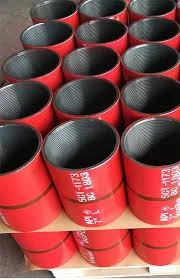- Afrikaans
- Albanian
- Amharic
- Arabic
- Armenian
- Azerbaijani
- Basque
- Belarusian
- Bengali
- Bosnian
- Bulgarian
- Catalan
- Cebuano
- Corsican
- Croatian
- Czech
- Danish
- Dutch
- English
- Esperanto
- Estonian
- Finnish
- French
- Frisian
- Galician
- Georgian
- German
- Greek
- Gujarati
- Haitian Creole
- hausa
- hawaiian
- Hebrew
- Hindi
- Miao
- Hungarian
- Icelandic
- igbo
- Indonesian
- irish
- Italian
- Japanese
- Javanese
- Kannada
- kazakh
- Khmer
- Rwandese
- Korean
- Kurdish
- Kyrgyz
- Lao
- Latin
- Latvian
- Lithuanian
- Luxembourgish
- Macedonian
- Malgashi
- Malay
- Malayalam
- Maltese
- Maori
- Marathi
- Mongolian
- Myanmar
- Nepali
- Norwegian
- Norwegian
- Occitan
- Pashto
- Persian
- Polish
- Portuguese
- Punjabi
- Romanian
- Russian
- Samoan
- Scottish Gaelic
- Serbian
- Sesotho
- Shona
- Sindhi
- Sinhala
- Slovak
- Slovenian
- Somali
- Spanish
- Sundanese
- Swahili
- Swedish
- Tagalog
- Tajik
- Tamil
- Tatar
- Telugu
- Thai
- Turkish
- Turkmen
- Ukrainian
- Urdu
- Uighur
- Uzbek
- Vietnamese
- Welsh
- Bantu
- Yiddish
- Yoruba
- Zulu
Exploring the Impact of Crossover on Pup Joint Performance and Functionality
The Significance of Crossover Pup Joints in Modern Engineering
In the realm of modern engineering and mechanical design, certain components play pivotal roles in ensuring the functionality and efficiency of various systems. Among these components, the crossover pup joint stands out as a vital element, particularly in the oil and gas industry. Understanding its significance, applications, and the engineering principles behind it is essential for anyone involved in these fields.
What is a Crossover Pup Joint?
A crossover pup joint is a short piece of pipe, typically a few feet long, that is used to connect two different pipe sizes or types within a pipeline system. It can be threaded or welded onto the ends of the pipes it is joining, making it a versatile solution for various applications. The crossover pup joint is particularly valuable in scenarios where a seamless transition between different pipe dimensions or materials is necessary, enabling the efficient transport of fluids under high pressure.
Applications in Industry
Crossover pup joints are predominantly used in the oil and gas sector, where drilling operations require a series of pipes operating under extreme conditions. These joints facilitate the transfer of drilling fluids, gas, and crude oil from the drill bit to the surface, ensuring that operations run smoothly and efficiently. Additionally, they play a critical role in maintaining the integrity of the pipeline, especially in environments where pressure and temperature fluctuations are common.
Moreover, beyond just the oil and gas industry, crossover pup joints are also utilized in various sectors, including water treatment, chemical processing, and mining. Their adaptability makes them a crucial component wherever different pipe sizes need to be seamlessly connected.
Engineering Considerations
The design and engineering of crossover pup joints involve meticulous calculations and material selection to ensure they can withstand the operational stresses encountered in their applications. Key factors include
crossover pup joint

1. Material Selection Crossover pup joints are manufactured from a variety of materials, including steel and corrosion-resistant alloys. The choice of material is influenced by the fluid being transported, the operating temperature, and the environment in which the joint will be used.
2. Pressure Ratings Each joint must be rated for the pressure levels it will face during operation. This involves rigorous testing and adherence to industry standards to ensure safety and reliability.
3. Connection Types The method of connecting the crossover pup joint to other pipes—whether through welding or threading—must be carefully considered. Each method presents its own set of challenges and advantages.
4. Quality Control Given the critical nature of their application, crossover pup joints undergo stringent quality control protocols during manufacturing. This includes non-destructive testing methods to detect any flaws or weaknesses that could lead to failures in the field.
The Future of Crossover Pup Joints
As industries innovate and develop new technologies, the design and functionality of crossover pup joints will likely continue to evolve. Advances in materials science, such as the use of composites or advanced alloys, could lead to lighter and more durable joints. Moreover, the growing emphasis on sustainability may drive the development of eco-friendly manufacturing processes and materials.
In the context of smart technology, the integration of sensors within crossover pup joints could provide real-time data on pressure, temperature, and fluid composition. This data could enhance predictive maintenance, allowing for early identification of potential failures and minimizing downtime in operations.
Conclusion
Crossover pup joints may seem like simple components, but their significance in modern engineering cannot be understated. By enabling the seamless connection of different pipe types and sizes, they ensure the efficient and safe transport of vital resources across various industries. As we move toward a future defined by innovation and efficiency, the role of crossover pup joints will be essential in meeting the challenges of tomorrow’s engineering demands. Understanding and improving these components will pave the way for advancements in the operational integrity and safety of critical pipeline systems, making them indispensable in the ongoing quest for industrial efficiency.
-
Well Casing Extension Couplings – Applications and InstallationNewsJun.06,2025
-
Types of Crossover Subs in Drilling & CompletionNewsJun.06,2025
-
Key Features of High-Quality Tubing Pup JointsNewsJun.06,2025
-
Installation and Maintenance Tips for Steel Couplings for PipeNewsJun.06,2025
-
How to Select the Right Pup Joint for Oil & Gas OperationsNewsJun.06,2025
-
Applications of Stainless Steel Pipe CouplingsNewsJun.06,2025







